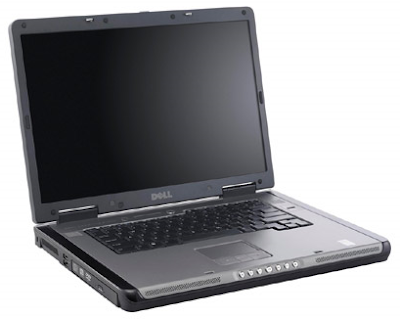I love my netbook. I have a Dell Mini 9, 1GB RAM, 16GB SSD, ubuntu Linux OS. I jumped on it as soon as they were announced and was on a 2 month back order. Very un-Dell-like, but worth the wait. As with everything, it is always good to wait until something matures, but in this case I was eager. Below is a screenshot of my desktop with twhirl opened so you can get a sense for the size.
I know some folks are in the market for a netbook and figured I'd give a list of some advice/experiences.
- I have the 16GB SSD drive, it was the biggest that they offered at the time. You can get way bigger now. I wanted to try life living in the clouds and so far so good. Majority of my files are in the clouds, only thing installed locally are applications. But, I'd go bigger if I had the choice today.
- I went with Linux as something I just wanted to do. ZERO regrets. I am very interested in Linux but was worried how I would interact with the world, ubuntu is truly amazing. It is a completely new way of thinking about Linux. I use it as much for work - office, online interaction.
- It came installed with ubuntu 8.04 (Hardy Heron) with the netbook remix interface. I have since upgraded to 8.10 (Intrepid Ibex) without much issue and have skipped the remix interface.
- Fantastic support can be found here and here.
- Know what to expect. A netbook is just that. A computer primarily intended to be used as for web browsing, light office application work.
- Watching tv, movies. Works like a charm if downloaded, 70% of the time it works streaming, but sometimes delays etc. Boxee is not working, hulu most of the time.
- Expect to pay $400-500. The $200 being advertised, you will quickly find are very low end machines. Pay the extra cash, its worth it. Extra cash comes with large storage, more memory, integrated camera and bluetooth.
- I am getting used to blogging now, but it wasnt ideal initially. I was lost without SnagIt (linux issue, not netbook). Also the tiny keyboard takes some getting used to. I still fat finger it alot.
- Really think about how you will access work, other files. I have settled on box.net, but still not perfect. There are a whole list out there.
- Google docs is a fantastic tool. I couldn't use it all the time, but its awesome. Great tool for netbook users. Collaboration is nice. Downside is if another collaborator doesn't have a google account. They claim otherwise, but that's been my experience. Also, no "review" tools.
- BIGGEST disappointment is the lack of 3G integration with the mini9, no excuses at all. It should be a requirement if you have a netbook. Live and learn for me.
- Most netbooks do not come with a CD/DVD drive, I purchased an external one and it was a total waste of money. I used it once to watch a movie.
- I have the Timbuk2 bag, really nice but it fits exactly the netbook and power cord, no room for a pen even.
- Battery life is pretty solid-- I get ~4hr with the larger Dell battery.
- I also bought speakers and a mouse. I would skip both next time. The creative speakers are nice, but they are now attached to my desktop. The mouse is still in the packaging.
- Web browsing takes some getting used to as the screen size is tiny. It is working ok for me, but I'd also take a look at the soon to be released mini10.

Here is a shot of the CFdesign home page in Firefox. Should give you an idea of the aspect ratio. I have both the netbook and the iphone. I couldn't imagine life without either. I know there is a trend that smaller is better and everything is going toward the handheld. I agree up to a point, but if I had to choose one, I'd go with the netbook, no question.






